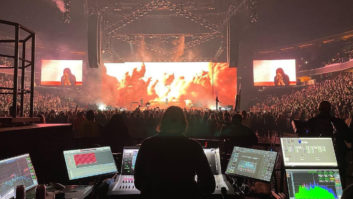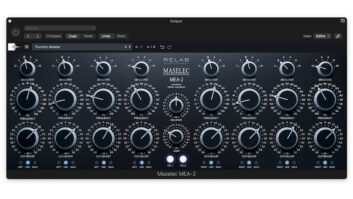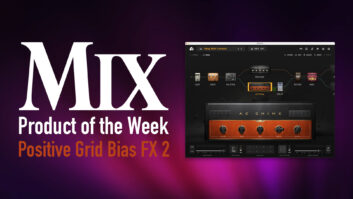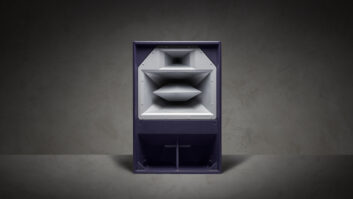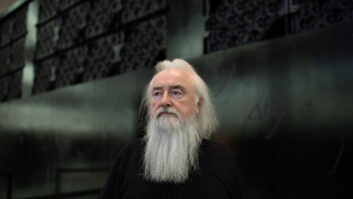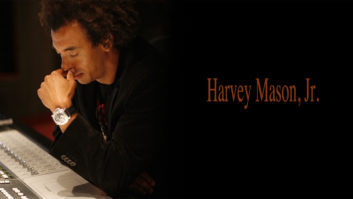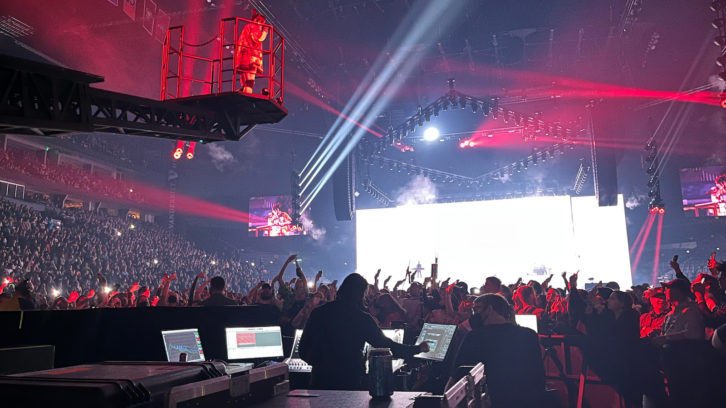
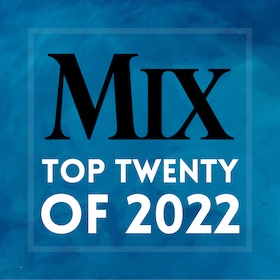 This was Mix’s 14th most-read article of 2022!
This was Mix’s 14th most-read article of 2022!
In our conclusion, the Billie Eilish tour’s audio team gears up for its 2022 run, rethinking everything from the ground up in order to move the needle one percent every day. Don’t miss Part 1!
2022 has been a long year for Eilish’s production team; while the U.S. tour leg is done and a European run just wrapped up at the start of July, there’s still a month’s journey through Australia and New Zealand in the Fall. Preparing for all that required extensive tour rehearsals, during which everyone from the name on the marquee on down put in extra time and effort.
“Our MD, Aron Forbes, is always saying, ‘Let’s move the needle 1 percent,’ and that is the mentality that the whole crew has,” said monitor engineer Salim Akram. “You find a good benchmark, and then how do you move it? Where can you improve once you actually get to the point where you need to be? We got to festival season last year, and you could see how some songs worked but maybe had a part that felt weird. When we were in rehearsals for a month, they addressed that and dialed in the transitions and parts that make a 90-minute arena pop show really musical. Billie, Aron, Finneas, everybody also went through the grueling process of making sure every single song in her catalog could be played at any point if she decided, ‘Hey, I wanna throw this in the set tonight.’ We always want to think outside the box, but execute within it.”
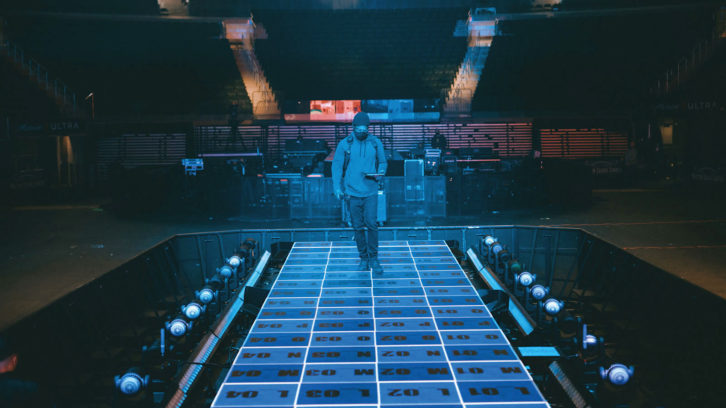
With only Eilish, multi-instrumentalist Finneas and drummer Marshall on stage, the use of pre-recorded tracks is a given on the tour, but like everything else associated with the show, they are used thoughtfully. “It’s more of utilizing technology to its fullest, versus as a crutch,” said Akram. “They do an extremely good job of making sure the live interpretation of the song is not just them playing over the record—but they don’t get carried away either. The live show puts the perfect spin on all the songs, so a fan will never be bummed out that the live version was this way-out version of the song.”
Apple MainStage and Ableton are key tools for providing Finneas and Marshall with everything they need for a given song; FOH engineer Drew Thornton noted, “Keeping it in MainStage makes it a little easier for us to translate patches and sounds Finneas used on the record. He works a lot in Logic for producing, so it makes sense for us to use MainStage as a platform.” While the software serves up MIDI changes and such via iConnectivity PlayAUDIO12 MIDI Interfaces to Finneas’ 64-key Akai, sample pads and Nord, it also provides Marshall with plenty of automated drum samples. A few tunes have triggers just for reinforcement, but most of the time, they’re layered to make a certain snare sound, such as on “NDA,” where a reverse envelope is key to the vibe; as soon as the snare drum hits, it’s like a waveform coming back after the hit.
Finneas on Fire
Both mix positions are centered around Allen & Heath mixing control surfaces, with a S5000 at the house mix position and a S7000 in Monitorworld that are tied to the DM64 digital stagebox. At stageside, Akram provides mixes for the three musicians, along with eight further mixes for techs, vendors and the like. As the artists have grown and changed over the last few years, so have their monitor choices.
“She’s been on in-ear monitors from day one,” said Akram, “starting with Ultimate Ears UE11s, which are probably one of the better molds out there for getting introduced to the in-ear game and discovering what your preferences are. Now Finneas and Billie are on JH Audio Roxannes and Andrew is on 64 Audio A12Ts. The Roxannes are able to reproduce a lot more low-end gracefully in a lot of unsuspecting spots, more like 35 to 200. My kick drum, low-end sub information, floor toms and other things can actually be put in appropriate places as opposed to having them all crammed into one place in the low end of the spectrum.”
SHAPING SHOOTOUTS
Keeping Eilish’s voice front-and-center throughout the show is no simple trick. While Thornton rides her fader, it’s a challenge regardless: “We had a new record last night: 114.6 dBA of the crowd at front of house. When you have a quiet singer on the thrust in front of the P.A. and the crowd is at most 10 feet away, you have a lot of bleed, obviously. For me, Waves [SuperRack] was a fantastic solution for trying different things in the vocal chain, because it allowed me to use a lot of tools and easily change the routing. I’m always trying to make small movements to see what best works for the situation, and it’s a pretty awesome tool to have in that regard.”
Currently, the vocal mics are all Shure Axient Digital ADX wireless with sE Electronics V7 capsules, but while the combination is growing popular (Phil Collins used the same arrangement on the recent final Genesis jaunt), the Eilish engineers came to the pairing organically after two extensive shootouts.
“On-and off-axis coloration was a huge consideration for making the choice to stick with the V7,” said Thornton. “I used pink noise, matched every single capsule to itself, and put it downstage center. We played the audience through the P.A. in the rehearsal space so I could hear what the capsule’s off-axis coloration would be. We also had our drum tech play the drums, and that way I could hear what the on-axis coloration would be. You have to be able to work bleed into the show. You don’t check drums without your vocal mic downstage center and maybe 6 dB down; keeping the open mic down there keeps you honest, because the drum bleed and audience bleed are going to be part of your sound.”
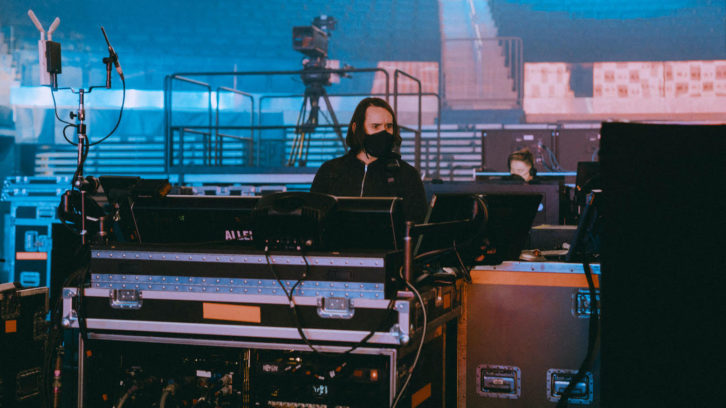
For an artist who’s been topping the charts for a few years, it’s almost surprising that the current world tour is Eilish’s first carrying a P.A., with an extensive Brit Row-supplied L-Acoustics K1/K2 rig hung above the stage. A typical show finds the mains 18 deep with 14 K1s and four K2s each; adjacent to them are a dozen KS28 subs flown on each side. The side-hangs’ K1/K2 arrangement is eight over eight, while rear hangs get 12 K2s. A total of four KS28s reside on the ground and three A15s act as infills.
“Low end is the thing she loves,” said Thornton. “It’s a very dense, low/low-mid record, so it’s very important to get that range; she cares about that a lot. Matt McQuaid, my incredible SE, has been doing a great job of getting the flown subwoofers to hit me like ground subs. Twelve subs per side looks awesome, but also it looks crazy; you’re like, ‘Wow, that’s a little overzealous’—but it’s fantastic.”
The ongoing quest to move the needle one percent finds all the crew members drawing on their own experiences to help create the best show possible. As a result, everyone involved has a stake in that nightly success, Akram explained: “I think everybody on the crew had what I call a ‘boys-in-vans touring era,’ where you get a bunch of homies, start a band, get a van and start touring. We’ve all had some version of that, so our level of camaraderie and understanding for how this gig operates—and our appreciation for it—is coming from a place of ‘Wow, all this around us is what we were trying to achieve with our bands.’ And we’re finding we’re just as happy doing it at this level for somebody else.”

